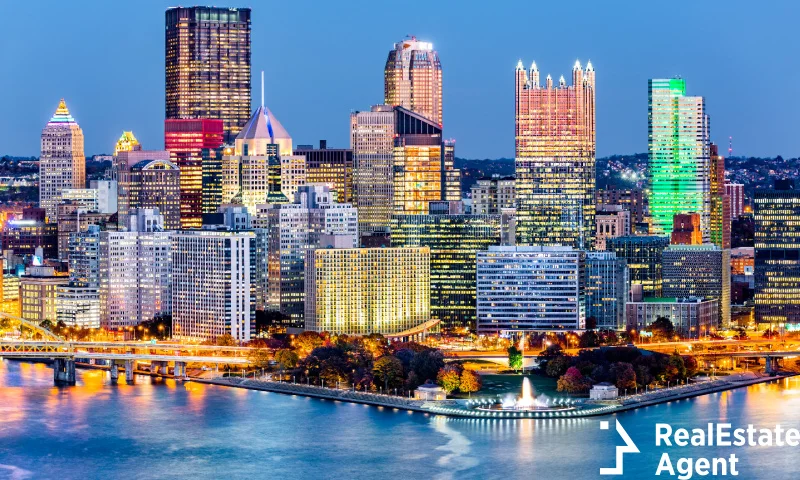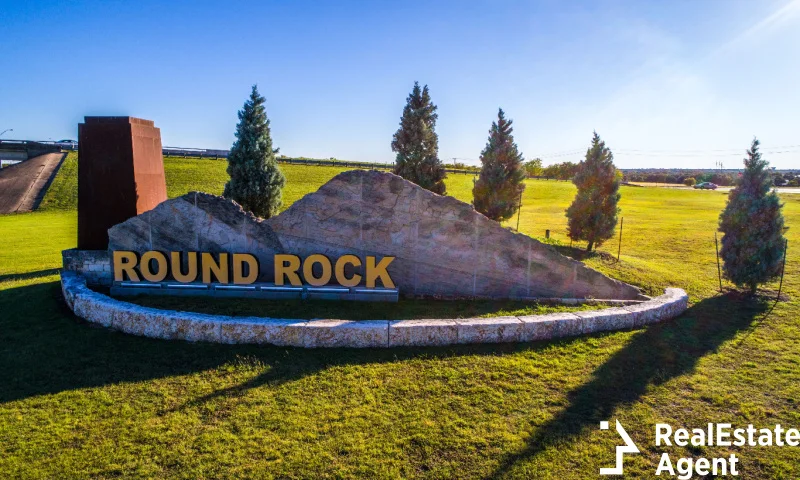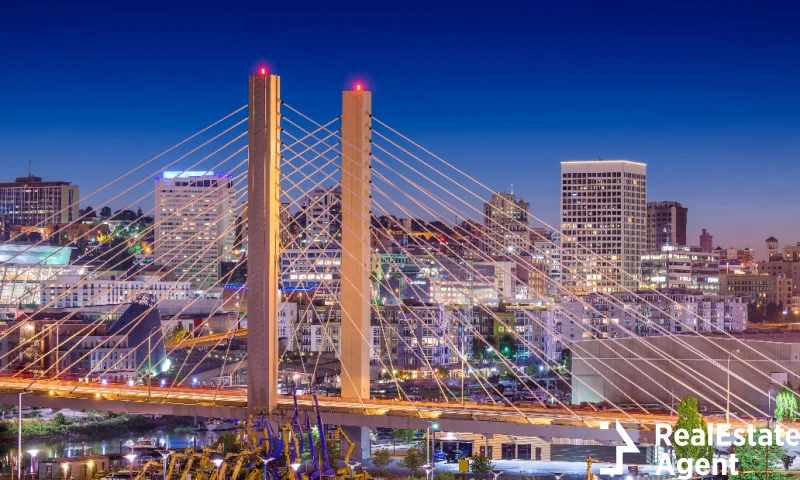From the African traditional houses to the “Minka” houses of Japan, I’m going to be your guide from RealEstateAgent.com. I will take you on a short architectural tour to get a glimpse of traditional houses around the world. It will be a lot of fun, and I hope you will find it helpful for your future real estate investments. So welcome aboard! Imaginary plane tickets are on the house!
Whenever I traveled, I used to take tons of pictures. No, not selfies… but pictures of buildings and houses. When I arrived in a new city, I would walk the streets hunting for the next architectural gem. Didn’t you do the same during your travels?
For example, on my last visit to Decin (Czech Republic), I was impressed by the beautifully landscaped gardens in front of the little houses up the hill from the train station. I felt like locals were fighting for the “Best Garden in Town” title – everyone was trying to make the place more beautiful and create the ultimate green recreational space, which gave me such a nice feeling!
I think we are all fascinated by other people’s way of living. Undoubtedly, traditional houses and local architecture can even attract tourists from all over the world. Think about Barcelona or Santorini and their types of traditional houses.
Article Summary:
- Discover the Beauty of Traditional Houses
- Traditional Houses Around the World Tour. First Stop: AFRICA
- Traditional Houses Around the World Tour. Second Stop: ASIA
- Traditional Houses Around the World Tour. Third Stop: EUROPE
- Traditional Houses Around the World Tour. Fourth Stop: LATIN AMERICA
- Traditional Houses Around the World Tour. Last Stop: NORTH AMERICA
Discover the Beauty of Traditional Houses
Culture and tradition influence the exterior appearance of a house, but also the interior partitions. When more buildings respect the same design principles and trends in one area and create a visually pleasing picture to look at, then you can call that building a traditional house specific to that area or to that ethnic group. While inserting certain cultural elements into the design of a house is done for artistic purposes, imitating a traditional house from the foundation to the roof in a different territory with no other similar buildings turns it into architectural kitsch and a lack of respect for the community. A challenge for most architects, the artists of the real estate world will be to artistically integrate new, fast, and cheap building technologies, like 3D printing, into their work. Will 3D printed homes become the new traditional house? Who knows?
As we jump from one continent to another, you’ll see that most traditional houses around the world were built from locally available building materials, some very unconventional but sustainable, in great harmony with nature. It is why we should appreciate those who still live in traditional houses.
Traditional Houses Around the World Tour. First Stop: AFRICA

So, dear passengers, you may unlock your seatbelts and drink a gallon of water. We have just landed on a hot and dry continent full of contrasts. The 1.2 billion inhabitants still carry the same well-known fights and struggles, slowing economic development. The good news is that more and more Africans have access to education. “Between 1990 and 2012, the number of children enrolled in primary schools more than doubled, from 62 million to 149 million children,” writes The Africa-America Institute in a report on the state of education in Africa from 2015.
In an optimistic scenario, as the level of education increases, demand for real estate assets (more or less traditional houses and commercial buildings) might exceed supply. Until then, apart from the big cities, the real estate market is practically nonexistent.
Most types of traditional houses will be simple, providing one room for the whole family. This is the reality for many living far from an urban area. Houses made of clay (adobe homes), straws, woven palm leaves, or other botanical parts provide shelter for many families. Raw materials are bound together like a cover for the burning soil. And nobody seems to desire a bigger or more luxurious home than his neighbors.
They don’t need real estate agents to sell this kind of dwelling since anyone can build their own house in one day.
There are several African traditional houses, each with unique particularities. African traditional houses vary in design and materials depending on the region and culture, but many have special features such as thatched roofs, mud walls, and intricate carvings.
The manyatta

Manyatta is a traditional Maasai homestead or settlement in East Africa. It comprises several temporary houses, called “bomas,” constructed by the Massai people using locally available materials such as mud, grass, and cow dung. The houses are arranged in a circular pattern around a central space where the Maasai livestock is kept at night.
Manyatta is a physical structure and a social and cultural system central to Maasai life. The Maasai people are pastoralists, meaning that their livelihoods depend on their livestock, and the manyatta is designed to protect their animals from predators and theft.
The banana leaves houses
Banana leaves houses are a unique and eco-friendly form of housing you can find in Rwanda. These houses are made from the leaves of banana trees, which are abundant in the country. The leaves are woven together to create panels that are then used to construct the walls and roofs of the homes.
One of the benefits of using banana leaves for housing is that they are a renewable resource. Banana trees overgrow and can be easily replanted, making them a sustainable option for construction. The leaves are also lightweight and easy to work with, making them a cost-effective choice for building homes in rural areas.
The Zulu Huts
Zulu huts are traditional dwellings used by the Zulu people, an ethnic group in South Africa. The huts are typically made from a frame of wooden poles, with grass thatch woven over the top. The shape of the hut is conical, with the roof tapering to a point at the top.
The huts are designed to be cool in the summer and warm in the winter, with the thatch providing insulation and ventilation. The walls of the huts are made from woven mats or grass, which can be rolled up to allow air to circulate.
Despite their poverty and primitivity, children still put a smile on their faces.
Life and joy find a way, and there is a lot of hope for the future. Africa’s economies are rising, and there are many successful high-end real estate developments for the next generation. Now back on the plane for our next stop.
Traditional Houses Around the World Tour. Second Stop: ASIA

Dear passengers, join us in the second stop of our traditional houses around the world tour. Asia is the continent of extreme weather – from scorching South temperatures to Siberia’s freezing temperatures.
Traditional houses are designed to provide comfort for the inhabitants, but even more so in Asia. Religion and mysticism have also shaped the buildings in this part of the world.
I’m pretty sure you have heard about the beautiful temples of Indonesia, India, and Thailand. The different types of traditional houses reflect the continent’s diversity and rich historical legacy (much resembling Arlington’s cultural heritage.)
The Minka
In Japan, the types of traditional houses are called Minka. They are famous for their tatami floors and sliding doors. Minka houses were built to suit the local climate and often featured steeply pitched thatched or tiled roofs to shed heavy snow and rain and thick walls made of locally sourced eco-friendly and energy-saving materials like wood, bamboo, earth, and stone to provide insulation against the weather elements. These homes were designed to be functional, with features like open fireplaces (irori) for cooking and heating and multi-purpose rooms that could be easily converted for different uses.
The Yurt
In Mongolia, the traditional house is called Yurt or Ger. It is a circular tent covered with skins or felt, while inside, it is full of color and patterns rich in symbolism.
Yurts are designed to be easily assembled and disassembled, making them ideal for nomadic lifestyles. They are also surprisingly durable and can withstand harsh weather conditions, such as heavy snow and strong winds.
Stilt houses
In Bangladesh, houses on stilts are ubiquitous. Stilt houses made of bamboo were convenient for a country crossed by so many rivers. The stilts or pillars provide elevation, which helps protect the house from water damage and provides a stable foundation in areas with the unstable ground.
Stilt houses have been used for centuries in different parts of the world, including coastal areas, flood-prone regions, and areas with high tides. They are also common in areas with an increased risk of natural disasters, like tsunamis, earthquakes, etc.
Thailand’s traditional houses
In Thailand, houses are made of bamboo and wood. A traditional Thai house is usually raised on poles, protecting it from wildlife and the monsoon floods. Thailand is a country rich in culture and history, evident in the traditional houses throughout the country. These types of traditional houses are not only a testament to the craftsmanship and ingenuity of Thai people but also reflect the country’s geography, climate, and lifestyle.
One of the most distinctive features of traditional Thai houses is their intricate wooden carvings and decorations. These carvings can be seen on the house’s roofs, eaves, and pillars and are often inspired by natural elements such as flowers, leaves, and animals. The carvings are not only decorative but also serve a practical purpose, as they help to ventilate the house and prevent the buildup of heat and moisture. Imagine a modern-day passive house!
India’s traditional houses
In India, diversity is the only similarity. Interior or exterior courtyards are essential for socializing and keeping the rooms cooler through ventilation. In the middle of the concrete jungles, two traditional forms of dwellings are worth mentioning: the Havelis of Rajasthan and the Bhungas of Kutch. Among the materials used for Havelis, one can find baked bricks, wood, granite, and even marble! Most facades display intricately carved patterns.
Besides their artistic value, carvings provide additional shadows, keeping the walls cooler.
Bhungas, in contrast, are simple round houses with a thatched roof – a design that proved climate responsive but also very safe in earthquakes and storms.
The Rumah Gadang
In Indonesia – the beauty of Rumah Gadang is hard to equate. Inhabited by the Minangkabau ethnic group, these types of traditional houses can be found on the island of Sumatra, Indonesia.
The Rumah Gadang is characterized by its steeply curved roof, which resembles the horns of a water buffalo. The house is typically made of wood, with a thatched roof and intricately carved wooden walls. The house is raised on stilts, which protect it from floods and wild animals.
The Rumah Gadang is not only a palace for a living but also a symbol of the Minangkabau culture and heritage. It is a place where the extended family can gather for social events, celebrations, and other important occasions. The design of the Rumah Gadang reflects the Minangkabau cultural values of community, cooperation, and harmony with nature.
The cave houses in Turkey
In Turkey, the region of Cappadocia takes you to the stone age. Yes, here, people still live in cave houses carved in stone! No doubt they also attract lots of tourists every year.
Located in the heart of Cappadocia, these unique dwellings have been carved into the soft volcanic rock formations, creating a stunning landscape that looks straight out of a fairytale.
These cave houses are visually impressive and offer a cool respite from the scorching Turkish heat, making them the perfect place to stay during the summer.
But don’t let the term “cave house” fool you; these accommodations are far from primitive. Many have been transformed into luxurious boutique hotels with modern amenities and upscale furnishings.
I know Asia is so tempting, but please don’t spend all your money here! We have three more stops to make!
Traditional Houses Around the World Tour. Third Stop: EUROPE
Dear passengers, welcome to our next stop in our traditional houses around the world tour! Home to over 741 million people, Europe is a blend of cultures, as migration from east to west is a constant. Imagine relocation trends in the US as something quite similar. Add in the mix the migration crisis that has hardly hit the countries around the Mediterranean sea, and you will find a very reluctant population that embraces tradition and homogeneity. Europe, a popular destination for Americans, is the birthplace of some great architects and artists, and they have left a precious architectural inheritance. But when it comes to the different types of traditional houses, if you ever cross the continent, make sure you will visit some of these fantastic places:

The trulli of Alberobello
On the heel of Italy’s boot, you will find the trulli of Alberobello – a white and bright village preserved by UNESCO. All those conical roofs made of stone will take your breath away.
Walking through the village’s narrow streets, you’ll be amazed by the sight of hundreds of trulli, all with distinctive white-washed walls and grey cone-shaped roofs.
Each trullo is different and has its own story to tell. Some are small and cozy, while others are grand and spacious, with multiple cones and elaborate decorations. Many trulli have been converted into shops, restaurants, and holiday homes, allowing visitors to experience life inside these unique buildings.
The chalets
Chalets are types of traditional houses encountered in the Alps, especially in Austria, Switzerland, and France. They originated in Switzerland and were traditionally used as seasonal homes for farmers moving their livestock to higher elevations during summer.
Chalets are characterized by their sloping roof, overhanging eaves, and exposed wooden beams. They often have large windows that offer panoramic views of the surrounding scenery. Many chalets also feature balconies or terraces where residents can enjoy the fresh mountain air and stunning views.
The Middle German Houses
In Germany, the traditional Middle German Houses will delight your eyes. These are timber-framed farmhouses constructed for the first time in the Middle Ages. If you ever fly through Frankfurt Airport, take the time to visit the city center – you will see some right there, near the City Hall.
Surprisingly, German architecture found a way to Eastern Europe, especially Romania – in Brasov, in the citadel of Sighișoara, or the UNESCO World Heritage village of Viscri. But did you know that Oradea and Timisoara are the only Romanian cities on the Art Nouveau European Route? These cities make for an excellent international real estate investment opportunity!
The dutch houses

Interedtingly, one of the most famous types of traditional houses is in the Netherlands. Narrow and tall, with big windows, extremely crowded on the little patch of dry land available, dutch houses are aesthetically good-looking rather than practical, especially in Amsterdam. Equally magical is the well-preserved UNESCO World Heritage city of Brugge in Belgium (see the first picture).
The turf houses
Now, flying North, I wonder if you can spot the turf houses in Iceland. Well covered with green turf, these types of traditional houses blend perfectly into the landscape, hiding from the cruel cold winds of the North. Similar constructions can also be found in Scotland, Norway, and Greenland.
What? You don’t want to leave? Dear passengers, the gates are closing right now. I’m sorry! Welcome on this long-haul flight to Brazil!
Traditional Houses Around the World Tour. Fourth Stop: LATIN AMERICA
Before we land, let me give you some facts and figures. Over 645 million people need a dwelling to reside in on this continent. Apartment buildings have become the norm, and many cities are developing vertically, especially in Brazil and Argentina. However, the buildings appear chaotical and overcrowded with no proper urban planning.
What about their types of traditional houses?
The favelas
In Rio de Janeiro, dangerous favelas cover the hills. These provide housing for low-income families, and crime has always been a problem.
While the favelas are often associated with poverty, crime, and social unrest, they are also a hotbed of creativity, innovation, and resilience. The favelas are a melting pot of culture, diversity, and ingenuity, from the street art that adorns the walls to the samba rhythms that fill the air.
The adobe houses of Peru
In Peru, two or more stories of adobe houses can be found in the Andean highlands.
Built using traditional methods and materials, these types of traditional houses have been a part of Peru’s landscape for centuries. Adobe is a type of brick made from a mixture of mud, clay, and straw, then sun-dried. The result is a durable, sustainable building material that has been used for centuries.
The adobe houses are often brightly painted, with intricate designs and patterns decorating the walls. You can find some of the most stunning examples of these houses in Arequipa, where the white volcanic stone and red adobe create a striking contrast.

The palafitos
On the Chiloe Island of Chile, people live in colorful wood cottages called palafitos, preferred for their seismic resistance. These homes have been used for centuries for communities to live harmoniously with water. They offer a unique perspective of the ocean and its inhabitants while providing a safe and sturdy place to call home.
In addition to their functional purposes, palafitos have become famous tourist attractions in recent years. Visitors can stay in these charming houses and experience life on the water firsthand. Imagine waking up to the sound of the waves, taking a morning swim right off your porch, and enjoying fresh seafood caught by local fishermen.
Traditional houses of Mexico
In Mexico, Spanish colonial-style homes and haciendas are widely spread. They are often labeled as luxury real estate in the US. The haciendas were large, sprawling estates usually owned by wealthy landowners. These types of traditional houses were built with thick walls, high ceilings, and open courtyards, which helped keep them cool during Mexico’s hot summers.
The colonial architecture of Cuba
Cuba is famous for its houses painted in bright colors and for its colonial architecture. Feng-shui style vibrant colors, intricate detailing, and ornate facades characterize this type of architecture.
One of the most recognizable features of Cuban colonial architecture is pastel colors. Buildings are often painted in bright shades of pink, blue, yellow, and green, which adds a playful and vibrant touch to the landscape. Many buildings are adorned with balconies, ornate ironwork, and intricate stonework, which give them a distinctly Mediterranean feel.
The two largest economies of this continent – Brazil and Mexico – attract the most foreign real estate investors. They are perceived as more stable and predictable than the others. And even more predictable is our last stop on this tour. So, brace yourselves! We are about to land in the United States of America!
Traditional Houses Around the World Tour. Last Stop: NORTH AMERICA
And just like that we’ve arrived to our last stop in our traditional houses around the world tour, North America. According to an HSBC report, North America contains only 7% of the global population but 22% of all residential property assets by value. Over 365 million peoples look for a place to live on this continent. An El Dorado full of opportunities, many have risked their lives to reach this new land. However, it would be interesting to see how different architectural currents have shaped traditional American houses over the years.
The log cabins
The log cabins were the traditional American house of the middle Atlantic colonies a couple of centuries ago. These humble dwellings were first built by early settlers, who used local timber to construct their homes in a style that has come to symbolize the pioneering spirit of America.
Today, log cabins continue to captivate the imagination of homeowners and vacationers alike. These charming types of traditional houses are beloved for their rustic charm, cozy interiors, and connection to nature. Whether you’re looking for a weekend getaway or a permanent residence, a log cabin offers a unique blend of simplicity and comfort that’s hard to beat.
The Georgian houses
The Georgian houses were famous in all colonies during the 18th century. Georgian architecture was brought to North America by British settlers and quickly became a popular style for homes, public buildings, and churches. Symmetrical facades, unique exterior colors, and central entrances characterize the design, and evenly spaced windows focus on proportion and balance.
Today, you can find Georgian houses across North America, from the historic homes of Boston and Philadelphia to the sprawling estates of the American South. Many of these homes have been lovingly restored and updated, preserving their original beauty while incorporating modern amenities and conveniences.
The Gothic style

The Gothic style, mainly used in rural areas (and which you can observe only in the best museums in the States nowadays), borrows shapes and ornaments from the facades of Gothic churches. The Gothic style was brought over from Europe during the late 19th and early 20th centuries and became a popular choice for churches, universities, government buildings, and other essential structures.
One of North America’s most notable examples of Gothic architecture is the Washington National Cathedral in Washington, D.C. The cathedral was designed by architect George Frederick Bodley and completed in 1990. Its impressive Gothic architecture features flying buttresses, pointed arches, and intricate stained-glass windows.
The Second Empire style
The Second Empire style – between 1852 and 1870, French architect François Mansart made the mansard roof famous, which is the defining element of this style. The roofs are usually made of slate or other durable materials, and their steep slope allows for additional living space in the upper levels of the buildings. The style also features elaborate facades with ornate balconies, bay windows, and decorative moldings.
The colonial style
The Colonial style is one of the broadest spread and beloved styles for traditional American houses.
The colonial style is characterized by its simplicity, functionality, and elegance. It features clean lines, symmetrical shapes, and a neutral color palette often complemented by warm, natural tones. The use of raw materials such as wood, brick, and stone is also a vital aspect of the colonial style.
The Pueblo houses
Other traditional dwellings are the Pueblo houses in the Southwestern part of the United States. Featuring thick walls, the interiors remain cool during the hottest days of the year.
Let’s not forget about the traditional houses of Native Americans – the conical tents called tepee (tipi in Canada) or the domed houses called wigwam.
The chickee huts
Chickee huts are also a form of dwelling built by Native Americans, mainly across Florida.
The chickee huts are open-air structures made from natural materials like cypress logs and palmetto thatch. They’re typically elevated on stilts to protect from flooding and wildlife, and their thatched roofs offer shade and ventilation.
The igloo

The igloo is a charming traditional house built by Inuits.
An Igloo’s shape is still widely replicated by other traditional houses around the world. An experienced builder can finish an igloo in one hour, while others need more than six hours to build one. Do you think people in Alaska and Northern Canada still live in Igloos? Not anymore
Nevertheless, igloo homes are still being constructed in emergencies or to provide temporary accommodation and protection.
Dear passengers, with this, our tour of houses around the world comes to an end. I hope you have found something new or something useful. After all, knowledge is one of your most valuable assets! The more you know about traditional houses around the world and architectural currents and styles, the easier you will spot properties worth investing in. But at RealEstateAgent.com, when one tour ends, another one starts. Please get in line for the next free tour: Best Cities to Live in the USA.
If we have missed a great place by any chance, let us know in the comments below.








